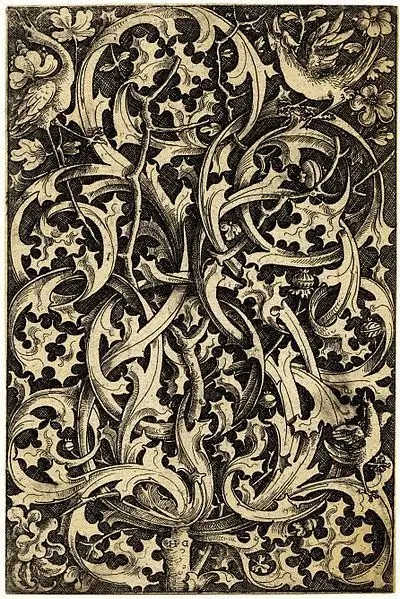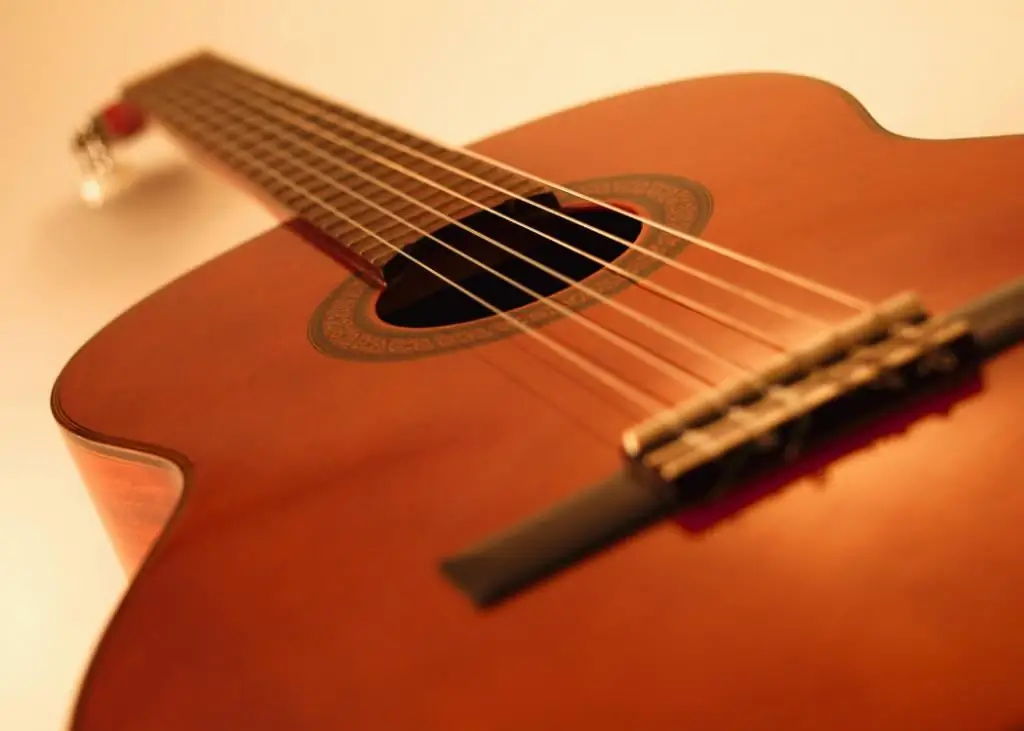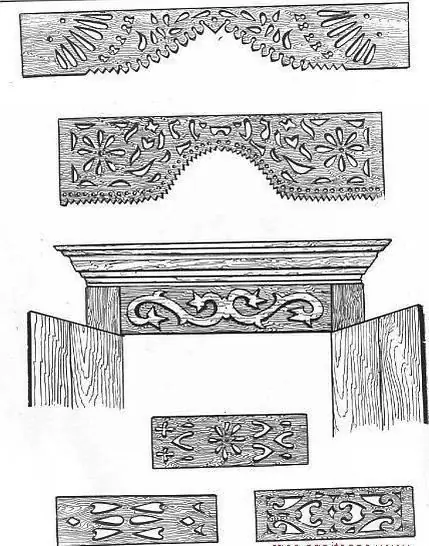2026 Author: Leah Sherlock | [email protected]. Last modified: 2025-01-24 17:46:33
Ossetian ornaments have been created for many centuries. They are considered one of the oldest in the culture of the Caucasus. Ossetian patterns are distinguished by their dissimilarity, they cannot be confused with other types of ornaments. They can be traced on almost all household items. These are dishes, clothes, various tools, tombstones and much more.
Where Ossetian ornaments were used and their meaning
As a talisman, patterns were applied to weapons, furniture, at the head of the bed or on the cradle of a child, chairs, armchairs and tables. In prosperous houses, the ornament was even applied to supporting pillars, arches, window frames and gates. At the same time, such inscriptions always carried a certain cipher or message.

The Ossetian ornament is fraught with a sacred sign, the meaning of which was lost over time. Modern scientists are trying to decipher and understand them. However, they are not always able to understand the meaning of these inscriptions. And now, looking at the patterns of Ossetia, we perceive them as simply beautiful things.
From simple to complex
At first, the Ossetian ornament was simple and unpretentious. Primitive strokes, circles, spirals of various lengths and thicknesses, zigzag lines. But gradually the patterns became more complicated,new elements were added in the form of geometric images of animals and plants.
Later images began to take the form of geometric patterns, which consisted of a large number of curls, spirals, various rhombuses and lines. The inscriptions of animals and birds harmoniously fit here. These were peacock, bull and ram heads intertwined with floral patterns.
Embroidered with such patterns, mainly clothes, shoes and hats. Ornamental compositions were made with threads of gold or silver. They were not only a decoration of clothes, but also protective patterns.
Woman is the main connoisseur of magical signs
Among all ancient peoples, a woman was considered the guardian of the hearth and the benevolent energy of the house. She processed wool and leather, felt cloaks, made homespun cloth, sewed fur coats and hoods. A woman could sew any clothes for her husband, children, for herself and at the same time decorate them with taste.
The caring hostess did not forget to apply amulets on clothes that protected her household members from everything bad. Usually magical Ossetian ornaments and patterns were embroidered in certain places of clothing.

Collars, shirt cuffs, hems, slits on shirts or sundresses, all this was covered with ornamental compositions. It was believed that the material remains impenetrable to evil spirits thanks to weaving magic. And the places where the material ended and the body began, they tried to protect with magic ornaments.
The women of Ossetia were considered skilled craftswomen and knew no equal ingold embroidery business. They decorated with gold embroidery not only festive clothes, but also small household items. These are pouches, various boxes, cases, wallets, handicraft bags and much more.
Women's wedding wear
For each thing or place in the clothes, a certain ornament was chosen. Clothing for women was dominated by floral and serpentine patterns. They have been used since ancient times, when the Mother Goddess Api was the main one. The upper part of the goddess's body was female, and the lower part was serpentine.
Ornamental patterns of vegetation personified nature, the universe and the whole world around. They were placed at the edges of the dress, where the fabric ends, which also protects the woman. The dress completely covered the bride's body from prying eyes.

Isosceles triangles were embroidered along the edges of the dress, the top of which always rested against the corner of the floor. From the triangle, or rather from its base, curves denoting fertility diverged to the sides. Rhombic figures on the Ossetian wedding dress symbolized the earth, plants and woman at the same time.
The bride's hat is also decorated with serpentine-shaped vegetation, but an animal ornament is already added here. Often, peacock heads were embroidered on the wedding cap.
Ossetian wedding clothes were also decorated with galloons, braid and gold embroidery. True, there were fewer decorations and ornaments than on a women's dress. Men's wedding attire should be strict in form and color.
Metal
Carving on natural materials and metalOssetian men were engaged. In this case, they were real craftsmen. The skillful Ossetian ornament is recognizable at first sight. Masters used patterns in weapons and blacksmithing, jewelry. Wood and stone products were decorated with carvings.

Gunsmiths decorated daggers, knives and guns with fine carvings. On such products, a floral pattern prevailed. Often, he imperceptibly intertwined with animal ornaments, creating bizarre lines and transitions. Such products were in great demand. The Ossetian ornament even now makes household items unique and in demand.
A certain pattern was carved on each item. Animal ornaments in the form of heads of rams and bulls prevailed on bowls, goblets and glasses. Ornate vegetation in the form of curls was added to them.
Woodcarving
Furniture and wooden parts of the dwelling were decorated with rhombuses, triangles, squares, straight lines. Combinations of solar and geometric patterns were carved on arches, supporting columns and gates. An ornament was applied to wooden doors, ceiling beams, jambs, cornices. All inscriptions carried only a magical meaning. They must protect the dwelling from evil spirits that could encroach on their dwelling.

Wooden containers for dough, bowls and dishes, armchairs and chairs - all this was decorated with magical signs. Particular attention was paid to the wooden table for sacrifices. Ornamental patterns were carefully selected, each sign carried a sacred meaning
Stonepatterns
Stone-cutting masters wove unknown cosmogony into their ornaments, which intertwined with the ornamental sign of the deceased. Looking at a tombstone decorated with sacred patterns, a person found out who was buried here, his fate, occupation, social status

Stone carving was very popular in ancient times. Battle towers and burial crypts were decorated with solar crosses, quadrangles, and geometric figures. Tombstones are decorated with sacral signs.
Masters and craftswomen of our time carefully preserve ancient traditions. Women create beautiful ornaments, embroidering them with threads of gold, silver and silk. Men know how to forge daggers and knives with vegetable patterns. They know how to make geometric mugs with ram head handles.
Currently, not every specialist can decipher Ossetian ornaments and their meaning. That is why they are considered a mystery like a code or a cipher of ancient people to our generation.
Recommended:
What is a film: concept, types and meaning in society

Art is a rather versatile concept. It includes a large number of categories, including cinema, literature, theater, etc. Cinema as a field of art basically contains film. In modern language, the concepts of "cinema" and "film" have merged into one
Types of literature and their purpose. Types of fiction

Literature is an amoebic concept (in equal terms, as well as types of literature), throughout the centuries-old development of human civilization, it inevitably changed both in form and content
Ornament of geometric shapes. Ornament styles. Ornament elements

The text tells about the origin and development of the oldest types of ornament, and also describes their properties and gives a brief classification
"A curious Barbara's nose was torn off at the market": the meaning and meaning of the saying

When we were children peeping at various interesting things, but not intended for the eyes of a child, our parents would catch us with the words: “The nose of the curious Varvara was torn off at the market”. And we understood what that meant, intuitively or consciously. In our article, we will deal with the meaning of this saying, and with whether it is good or bad to be curious
A good guitar for beginners: types and types, classification, functions, characteristics, selection rules, application features and rules of the game

The constant companion of a cheerful company on hikes and at parties, the guitar has long been very popular. An evening by the fire, accompanied by enchanting sounds, turns into a romantic adventure. A person who knows the art of playing the guitar easily becomes the soul of the company. No wonder young people are increasingly striving to master the art of plucking the strings

